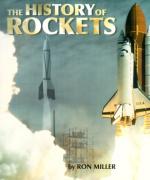|
This section contains 1,182 words (approx. 4 pages at 300 words per page) |

|
Rockets are machines propelled by one or more engines especially designed to travel through space. Rocket propulsion results from ejecting fuel backward with as much momentum as possible. One example is a firecracker that misfires and fizzles across the sidewalk. Currently, most rockets use a solid or liquid propellant that relies on a chemical reaction between fuel and oxidizer for thrust. Although chemical rockets can develop great thrust, they are not capable of lengthy operation. To overcome this drawback, research has been conducted on rockets that use different types of chemicals, or reactants. One type of nonchemical rocket is powered by ion propulsion. These rockets turn fuel into plasma and eject the ions to create thrust. Nuclear rockets that use a nuclear reactor to heat and eject fuel are still at the experimental stage. Scientists have also outlined schemes for fusion pulse rockets, solar sail rockets, and photon...
|
This section contains 1,182 words (approx. 4 pages at 300 words per page) |

|


